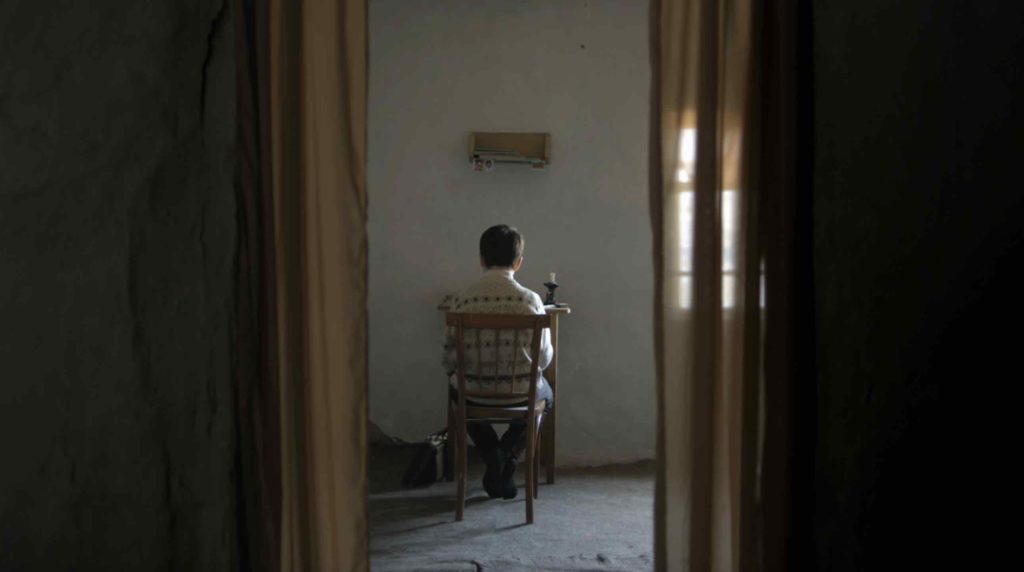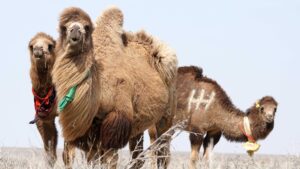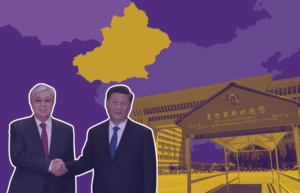CENTRAL ASIAN CINEMA. The film The Wounded Angel (2016) follows four adolescent boys in a rural village in mid-1990s Kazakhstan, each trying to come to terms with the lack of opportunities and injustices around them, leading to patterns of self-destructive behaviour.
“Central Asian Cinema” is a series of collaborative articles written by different members of the Novastan team to share their favourite cinematographic moments about Central Asia. Each article describes a film produced or shot in Central Asia which is available to watch online.
The Wounded Angel (2016) is a sparse, quiet film set in Kazakhstan in the years after the dissolution of the Soviet Union, when the country was spiralling into a deep economic crisis. This is the setting in which director Emir Baigazin weaves this slow-burn narrative about young men who are victims of the wider issues dominating their upbringing.
Want more Central Asia in your inbox? Subscribe to our newsletter here.
The film is beautifully shot, making heavy use of lingering shots in darkened, empty rooms or the sepia-toned vastness of the Kazakh Steppe. The undeniably attractive visual aspect of The Wounded Angel does not overshadow the strange plot turns, drawn out through deliberately limited dialogue, and the emotional scenes contrasted to impressively stoic reactions.
The strength of Baigazin’s piece is what it illustrates about Kazakhstan’s post-Soviet identity. Through the four young protagonists, we see clearly the limitations of their home life, and can share their deep-seated desire to break free of the monotonous hopelessness of their village. Each story has overlap on this theme, but brings about a new dimension of Kazakhstani culture following the collapse of the USSR, including the exploration of petty crimes, the stigma of being an ex-prisoner, the practice of making money from selling scrap metal, and the pressures of obtaining education. Each plot carefully crafts the generational and cyclical nature of the poor choices made, often in haste or as a cry for help.
Read more: Igla: plunge into the underworld of Kazakhstan’s perestroika with the legendary Viktor Tsoi
Each vignette is thought-provoking in its own way, providing loose moral lessons with no fixed resolution for the protagonists. Through its use of close-ups and extended scenes, The Wounded Angel feels especially realistic, acting as a glimpse into a place which seems reflective of the real conditions of any rural setting in Central Asia at this time. Ultimately it is a film about graft, hardship and the often harsh reality of confronting one’s own dreams. Though difficult to watch at times and slow to develop, even grinding to an almost complete stop at times, The Wounded Angel is a truly profound addition to Kazakhstani cinema, and showcases human tragedy at this point of historical stagnation.
The Wounded Angel is available on MUBI with English subtitles.
Tommy Hodgson
Novastan.org
For more news and analysis from Central Asia, follow us on Twitter, Facebook, Telegram, Linkedin or Instagram.
 The Wounded Angel: a dramatic and profound portrait of 1990s rural Kazakhstan
The Wounded Angel: a dramatic and profound portrait of 1990s rural Kazakhstan 



